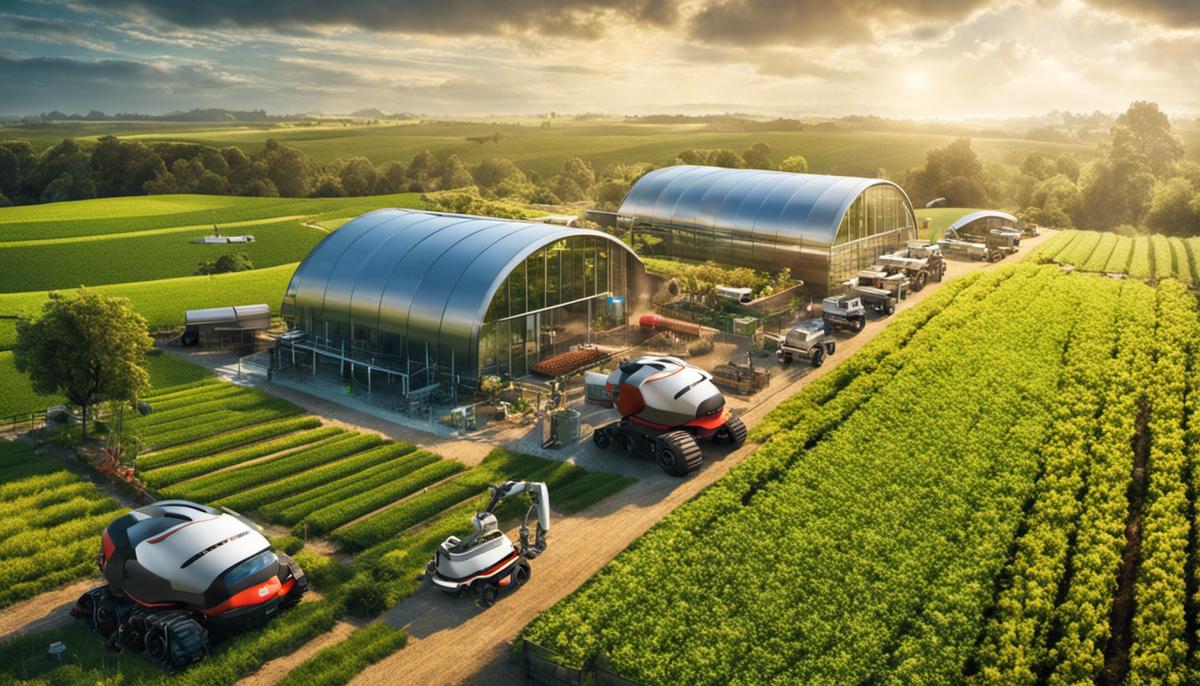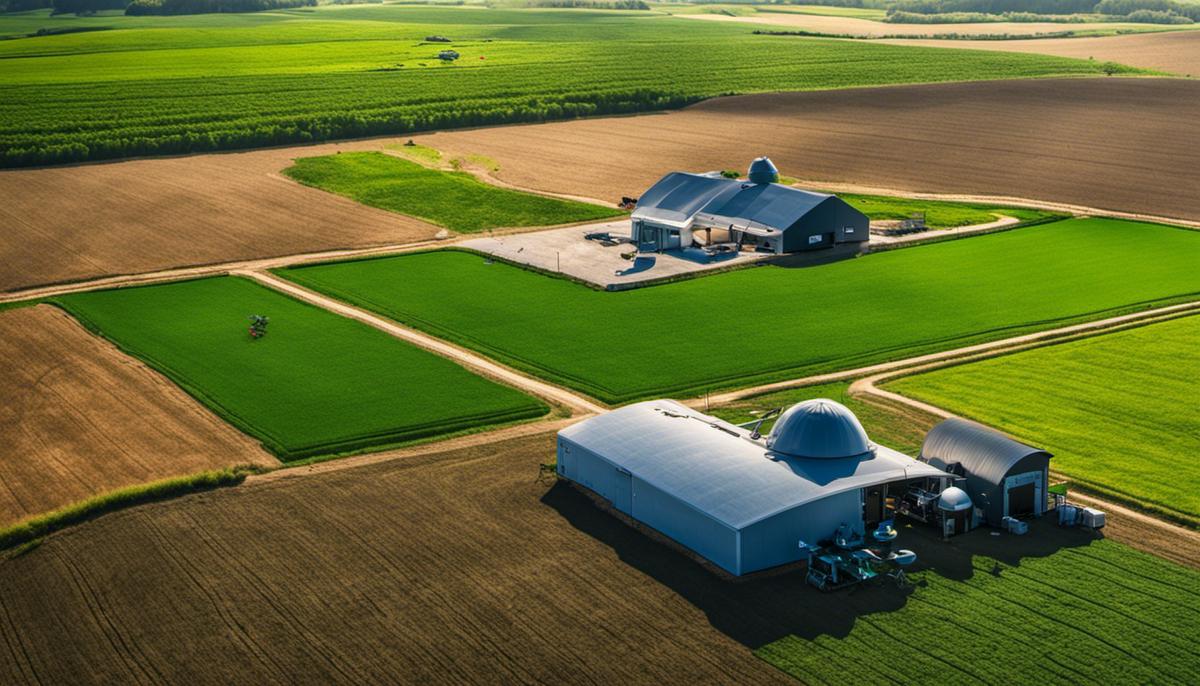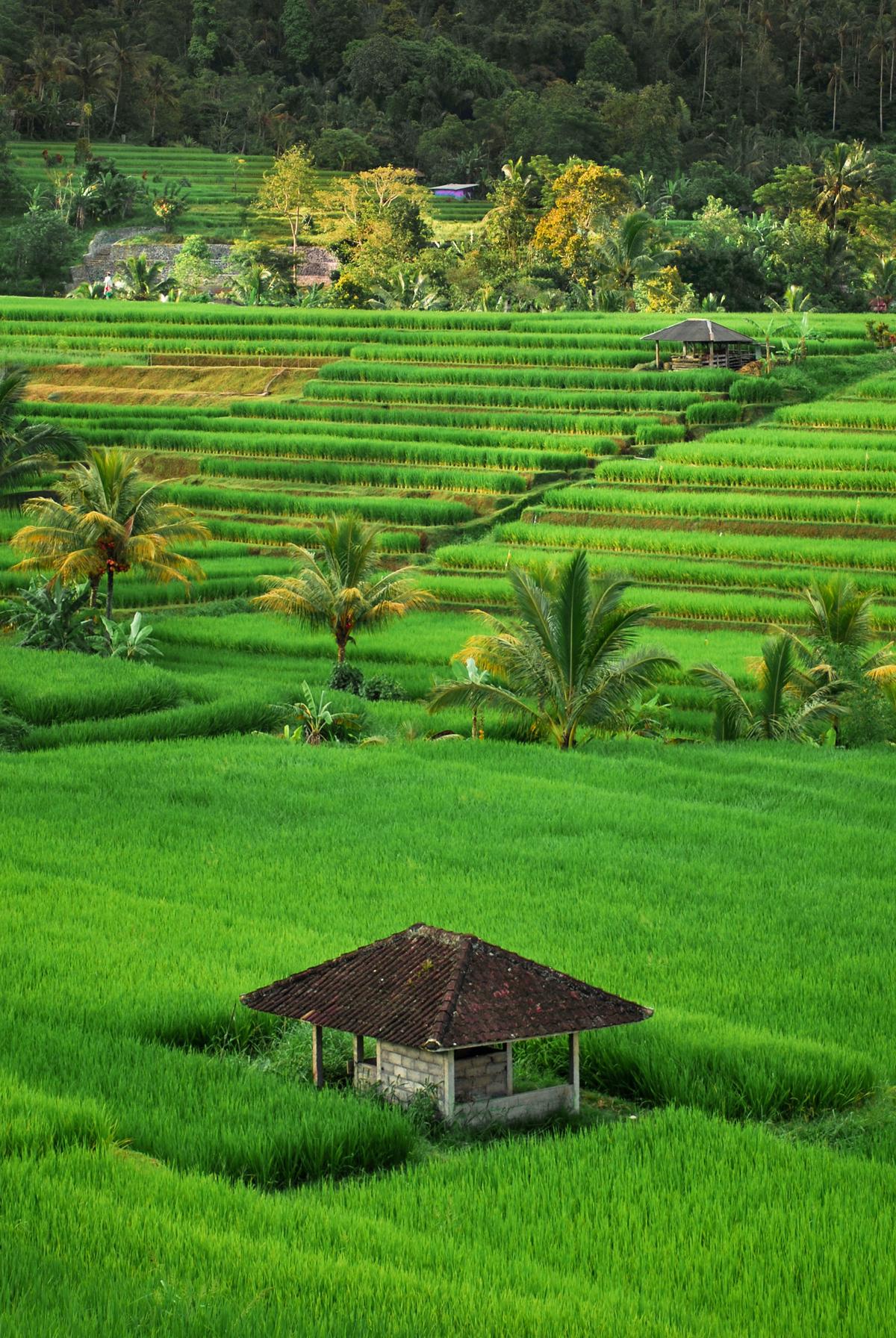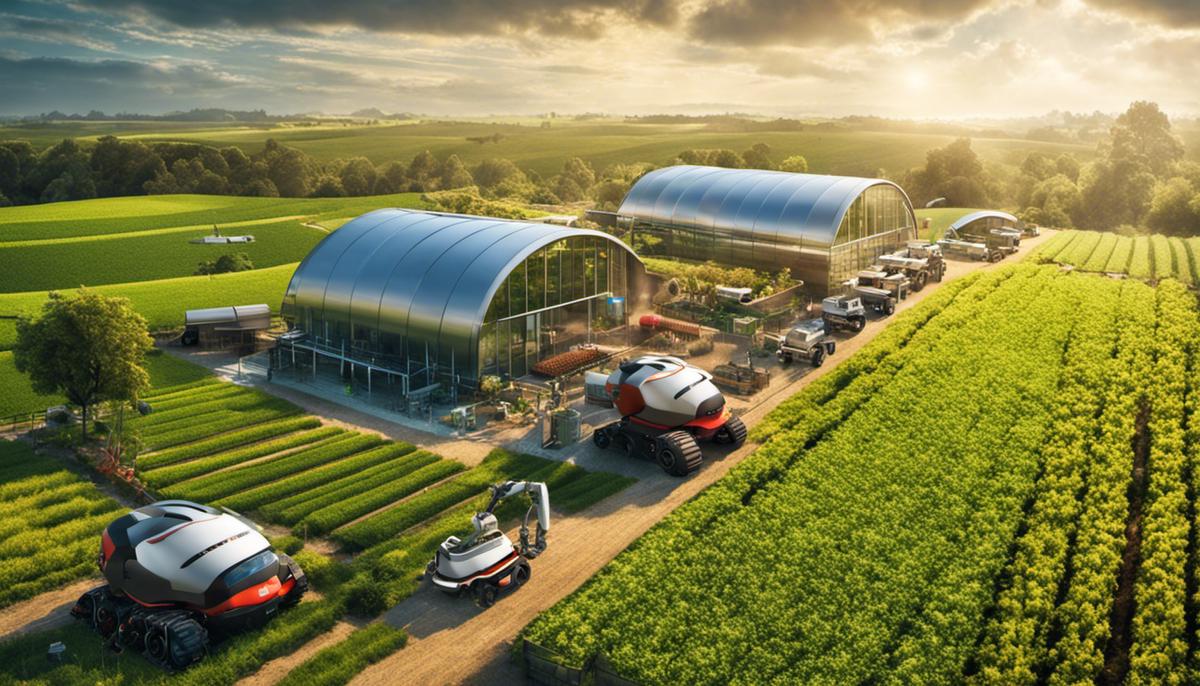
What is smart farming?
Description: In the midst of the digital era, a new horizon beckons for agriculture - one that marries traditional practices with technologically advanced strategies. This revolutionary approach, known as Smart Farming, leverages the power of modern technology to optimize yield and efficiency, thereby lending a facelift to the age-old profession of farming. From employing automated machinery and utilizing data science for informed decision making, to embracing precision farming techniques, smart farming is transforming the agricultural landscape radically. However, akin to any major paradigm shift, this approach is also laden with certain challenges, be it the complexity of technology, cost factors, or the burgeoning pressures of climate change. Nevertheless, the promise of a sustainable future underlines the movement towards smart farming, thus anchoring it firmly as an integral player in humanity's fight against global crises. Title: The Underlying Principles and Evolutionary Progress of Smart Farming Any conversation about modern-day agricultural practices would surely highlight the advent and implementation of smart farming. Unlike its conventional counterpart, smart farming – or precision agriculture – employs the precise and effective use of resources using sophisticated technologies. This innovative approach to farming revolutionizes agricultural practices through two core principles: data intelligence and precise application. An indispensably central pillar of smart farming is the capture and utilization of data on a granular level, leveraging high-tech tools such as sensors, satellites, and drones. These tools aid in gathering detailed information on parameters like soil composition, weather patterns, plant health, and crop yield. This rich data pool provides insights that eventually guide decision-making processes, ensuring that the right interventions are made at the right time. Farmers can, therefore, make informed decisions that maximize productivity while minimizing waste, leading to sustainable and profitable farming practices. The second fundamental principle hinges significantly on the first. With the gleaned data intelligence, technology-driven resource application steps in. Technologies like precision irrigation systems, autonomous equipment, variable rate technology (VRT), and GPS systems permit the accurate application of farming inputs based on the data collected. Consequently, each plant or field section receives optimized and precise care. This increased level of precision not only amplifies the farm’s productivity but also substantially reduces the environmental footprint of farming operations. Smart farming, like other technology-driven fields, has not stagnated since its nascent stages. It has advanced to a fascinating extent, riding on the wave of technological advancements. The progression over time can be distinctly seen in the evolving means of data collection, data analysis, and input application. Historically, data capture was generally manual, labor-intensive, and time-consuming. Modern smart farming, however, harnesses sophisticated technologies such as Internet of Things (IoT) devices, drones, and satellites for efficient data acquisition. These transformative tools have exponentially increased the accuracy, speed, and volume of data that can be collected. Likewise, the analysis of this broad spectrum of data was initially manual and less precise but has evolved immensely. Modern computational technologies, such as Machine Learning and Artificial Intelligence (AI), play a fundamental role in smart farming by mining vast and complex data sets to deliver actionable insights efficiently and accurately. With regards to input application, the evolution is similarly impressive. Early smart farming relied heavily on manual labor, even with data-driven directives. Today, advanced robotics and autonomous machinery efficiently apply farm inputs, thereby saving time, labor, and resources. The technological trajectory mapping the evolution of smart farming indicates an ever-advancing field that continuously integrates emergent technologies. Undoubtedly, this is a testament not only to the changing landscape of contemporary farming but also to the dedication and creativity of scientists, academics, and farming practitioners alike. Their collective passion and commitment promise a future for smart farming that, while presently nascent, shall undoubtedly reap rewarding harvests. As developments continue to burgeon, the principles of data intelligence and precise application will remain central in guiding the innovative march of smart farming towards greater efficiency and sustainability. Technological innovations have proven integral in advancing smart farming. As this relatively nascent domain of agriculture surges towards maturity, several technological breakthroughs act as pivotal catalysts. This transformaional sect of sustainable agriculture is continually molded by innovations in digital agriculture, automation, IoT, and AI-driven analytics tools, drilling beyond the previously delineated parameters. Post the orchestration of primary data collection tools – sensors, satellites, and drones – the intrigues of smart farming started unraveling the hidden potential of Remote Sensing Technologies (RSTs). RSTs enabled extensive data capture on variables like soil content, plant health, and climatic conditions to inform real-time decision making. This technology is crucial in combating the uncertainty associated with farming, allowing for preemptive measures and timely interventions. Wireless Sensor Networks (WSN) have also embossed their mark on smart farming. These networks encompass multiple sensors disseminated across the field, facilitating continuous monitoring of parameters such as soil moisture, temperature, and pH levels. Such coordinated and real-time surveillance systems highlight anomalies, prompting immediate actions where necessary, thereby subsiding potential losses. Continued progression in this domain witnessed the integration of Location-based Services (LBS). The synergy of Global Navigation Satellite Systems (GNSS) and the Global Positioning System (GPS) transformed conventional farming through precision farming practices. LBS allow precision in applying resources like fertilizers and pesticides, supporting effective farming with minimized wastage and a reduced environmental impact. Burgeoning on these advancements, Image Recognition technology has further catapulted smart farming to new heights. Powerful in-field cameras and aerial drones capture high-resolution images, analyzed using Machine Learning (ML) algorithms. These tools differentiate between crop and weed, aid in pest detection, and monitor crop health, making them an indispensable asset for making proactive and informed decisions. Moreover, the deployment of Autonomous Robots has reinterpreted efficiency on farmlands. Equipped with sophisticated sensors and ML algorithms, these robots can perform a myriad of tasks, including weeding, seeding, harvesting, and pruning, regardless of daylight availability. By taking over mundane and strenuous tasks, these robots recast the role of farmers to more strategic and management-centric activities. Finally, one must consider Artificial Intelligence (AI) and data analytics as the intellectual epicenter of smart farming. AI algorithms extrapolate complex patterns out of vast data arrays, making predictive analytics feasible. This technology provides critical insights into crop yield predictions, optimal planting times, and pest outbreak predictions, streamlining farm management and productivity. In synthesis, the confluence of all these technologies under one umbrella – smart farming – is redirecting agriculture towards an environmentally sustainable and economically viable future. With ceaseless research and trials, it is anticipated that the horizon of smart farming will continually expand, especially in light of the rapid advancement of technologies. The relentless pursuit of knowledge and innovation by countless individuals dedicated to this field only solidifies the fact that the pinnacle of smart farming is yet to be seen. The progressive integration of advanced technologies in agriculture, known as smart farming, unequivocally holds the potential to engender a significant transformation in the entire sector. Among these technologies, Remote Sensing Technologies (RSTs), Wireless Sensor Networks (WSNs), Location-based Services (LBS), Image Recognition Technology, Autonomous Robots, and Artificial Intelligence (AI) are remarkably prominent. Each holds vast potential to elevate agricultural practices while invariably presenting challenges for their adoption. Remote Sensing Technologies (RSTs) are being optimally employed to gather precise information with regards to soil, crop, and environmental conditions. The data captured by these technologies enables farmers to remotely monitor field conditions and accordingly make informed decisions. However, sophisticated RSTs bear a high initial setup cost and require skilled technicians for proper operation and maintenance, presenting substantial challenges in its widespread application. Wireless Sensor Networks (WSNs) provide constant real-time monitoring of various parameters like soil moisture, temperature, humidity, and nutrient levels, thereby availing precise knowledge for ideal farming practices. Yet, the connectivity issues, data security, and high costs involved with WSNs mar their universal feasibility in farming practices. Location-based Services (LBS) offer remarkable assistance in monitoring livestock, applying fertilizers, and pest control by accurately determining the location information. However, factors, including privacy concerns, technical issues such as the accuracy of the system, and infrastructural challenges, limit their immediate adoption in smart farming. Image Recognition technology facilitates disease detection and nutrient deficiency in crops, making it a potent tool in modern farming. Although this technology has the potential to uplift crop health management, the requirement for high-quality data, the intricacy in image analysis, and the high cost of application can deter growers from implementing this technology. Autonomous Robots are gaining recognition in smart farming for their efficiency in performing tasks like harvesting, weed control, and fertilizing, thus optimizing human efforts. However, the massive investments required for these robots, coupled with safety concerns and the prerequisite for advanced technical knowhow, constitute significant hindrances. Finally, Artificial Intelligence (AI) and data analytics, which underline the essence of smart farming, have revolutionized decision-making processes. AI algorithms enhance predictability, minimizing risks and maximizing productivity. Despite this, the limited access to technology, training, and the high costs associated with AI impede its extension into all parts of the agricultural sector. Thus, while the adoption of these technologies in smart farming presents monumental potential benefits, including heightened productivity, cost efficiency, and reduced environmental impacts, the challenges in their universal implementation are formidable. Rigorous research, strategic investment, and policy intervention to support the diffusion of these technologies are essential to counter these challenges and enable the realization of the full potential of smart farming. The global forecast for smart farming presents an impressive projection of this transformative approach in the agricultural sector. According to a report by Grand View Research, the global smart farming market size is anticipated to reach USD 28.4 billion by 2028, growing at a compound annual growth rate of 13.4% during this forecast period. This foretells a positive trajectory in farming, pivoting towards modernization and efficiency, indispensably contributed by intelligent application of technologies. Smart farming plays a pivotal role in global sustainability goals, a critical aspect resonating with the United Nations Sustainable Development Goals (SDGs). It holds remarkable potential to rectify traditional farming inefficiencies and ameliorate food security, fundamentally distressing Goal 2: Zero Hunger. Application of data-driven tactics allows for maximized yield with minimized resources, thereby addressing Goal 12: Responsible Consumption and Production. Furthermore, exact input application mitigates harmful environmental impacts, aligning with Goal 13: Climate Action, and Goal 15: Life on Land. Futuristic technology adoption like Internet of Things (IoT), embedded systems, and cloud platforms unveil new farming horizon. The IoT, utilizing interconnected devices for farming operations, enhances farming procedures and reduces labor-intensive activities. Embedded systems, designed for dedicated functions, offer custom solutions for monitoring and control of agricultural variables. Cloud platforms facilitate ease of data access and analytics, enabling better decision making and yielding notable efficiency gains in farming practices. Moreover, technologies like Big Data, Blockchain, and Nanotechnology will flourish as mainstays in smart farming. Big Data, managing voluminous collection of information, aids in discerning insightful patterns and trends useful for agricultural decision-making. Blockchain ensures traceability and transparency in the agricultural supply chain, ensuring food safety and minimizing wastage. Nanotechnology, manipulating matter on a molecular scale, promises unparalleled precision in disease control, water treatment, and nutrient management in agriculture, among other applications. Despite the enormous benefits, the transition to smart farming comes with formidable challenges. Key concerns revolve around infrastructure, initial investments, training, technological resilience, and data security. It's essential to acknowledge that the solution doesn’t lie in technology alone but also in fostering an environment for these innovations to thrive. As smart farming ripens its potentialities, an urgent necessity emerges for regulatory bodies and stakeholders to generate a conducive ecosystem for this digital revolution in agriculture. By establishing an enabling environment facilitating research, initial investment, technological deployment, farmer training, policy interventions and stakeholder engagement, the forecasted trajectory of smart farming will curve towards a future intertwining better food production, improved lives for farmers and global sustainability goals. The fusion of technology with traditional farming practices, as we see in smart farming, is not merely a passing spectacle. It is a scientific revolution that is rewriting our agricultural narratives by permeating all aspects of farming. Its impact extends beyond mere enhancement of productivity and reduction of waste, it realigns agriculture towards sustainability and resilience. Indeed, as we march towards this transformation, it is clear that farming is not just smart; it is brilliant. The canvas of smart farming is vast, offering rich possibilities for growth, innovation and improved efficiency. A thorough assessment reveals the immense benefits of increased productivity, better crop health and superior risk management. Despite the challenges that stand in its pathway including technological intricacies, cost implications and climate change repercussions, smart farming stands tall as a resilient response to these pressures. As the world grapples with such issues, the future of smart farming becomes not just an exploration of technological variants, but a journey into the survival and progress of humanity. The intertwined relationship of global sustainability, technological development, and agricultural innovation breathes life into the future of smart farming, illuminating its pivotal role as a key adapter and mitigator in the face of our urgent crisis.Understanding Smart Farming

Technological Innovations in Smart Farming
Technological Breakthroughs: Ushering in the Next Level of Smart Farming

Benefits and Challenges in Smart Farming

The Future of Smart Farming
